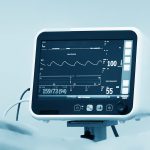In today’s highly regulated and data-driven pharmaceutical landscape, data standardization is no longer a luxury – it’s a necessity. Whether working with nonclinical safety data or clinical efficacy results, the ability to integrate datasets seamlessly is critical for speeding up regulatory approvals, improving data quality, and facilitating insights.
The Clinical Data Interchange Standards Consortium (CDISC) has created standards like SEND, SDTM, and ADaM to guide this process. But true value emerges when these standards are integrated into a unified framework, creating a smooth, end-to-end continuum of research data.
Let’s explore how SEND fits with other CDISC standards and how integrating them holistically promotes smarter, faster, and more compliant drug development.
Overview of SEND & Other CDISC Standards
Overview of SEND & Other CDISC Standards
SEND (Standard for Exchange of Nonclinical Data) provides a standardized format for the presentation and electronic submission of nonclinical (animal toxicology) study data to regulatory authorities, particularly the FDA.
- Purpose: To improve the review and analysis of nonclinical data.
- Scope: Applies primarily to toxicology and pharmacology studies submitted during Investigational New Drug (IND) and New Drug Application (NDA) processes.
SEND transforms messy, variable datasets into clean, structured, and machine-readable formats – essential for efficient regulatory review and future analysis.
Beyond SEND, CDISC offers several core standards for clinical trials:
- SDTM (Study Data Tabulation Model):
Organizes clinical trial data into standardized domains, facilitating easy interpretation and submission to regulatory agencies like the FDA and PMDA. - ADaM (Analysis Data Model):
Focuses on datasets created specifically for statistical analyses, ensuring traceability from raw data (SDTM) through to derived outputs.
Together, SDTM and ADaM build the clinical side of the data ecosystem, while SEND structures nonclinical submissions. The synergy among them ensures end-to-end transparency and consistency.
The Synergy Between SEND, SDTM, and ADaM
While SEND, SDTM, and ADaM are designed for different types of data, they share many common structures, philosophies, and objectives:
- Common Structures:
All three standards use tabular formats with variable-level metadata, domain names, and controlled terminology, creating familiarity across datasets. - Data Flow:
SEND provides early-phase, nonclinical insights that inform clinical trial designs later captured in SDTM and analyzed through ADaM. - Consistency and Transparency:
Having standardized frameworks across preclinical and clinical phases improves the reproducibility and traceability of findings, supporting regulatory confidence.
Think of it like building a bridge from animal testing to human trials – using the same construction principles on both sides makes the connection strong, reliable, and easy to navigate.
Benefits of a Unified Framework
When organizations integrate SEND with SDTM and ADaM effectively, the advantages are enormous:
- Streamlined Regulatory Submissions:
Harmonized data speeds up agency reviews and reduces back-and-forth clarifications. - Improved Data Traceability and Integrity:
With clear lineage from raw collection to analysis-ready datasets, auditors and regulators can easily verify results. - Facilitated Cross-Study Analysis:
Integrated, standardized data enable meta-analyses, cross-domain reporting, and broader safety and efficacy evaluations. - Cost and Time Savings:
Fewer data issues, fewer submission delays, and fewer regulatory setbacks mean faster approvals and lower operational costs.
Ultimately, an integrated CDISC ecosystem enhances operational excellence, scientific rigor, and strategic advantage.
Challenges in Integration
Of course, integrating SEND with SDTM and ADaM isn’t without hurdles:
- Different Paradigms:
Nonclinical studies differ substantially from clinical trials in structure, endpoints, and methodology, requiring careful mapping. - Training and Expertise:
Specialized knowledge in both nonclinical and clinical standards is needed – something many organizations still lack. - Technology Gaps:
Legacy systems may not support automated standardization, requiring significant investment in new tools or manual reformatting.
Without strong project management, governance, and technical support, integration efforts can quickly become fragmented and inefficient.
Best Practices for Effective Integration
To maximize the benefits of integrating SEND, SDTM, and ADaM:
- Align Early:
Design a data strategy early in the drug development process that anticipates both nonclinical and clinical needs. - Invest in Tools:
Use data mapping, validation, and automation tools to minimize manual errors and speed up transformations. - Cross-Functional Collaboration:
Build teams that include nonclinical scientists, clinical data managers, biostatisticians, and regulatory specialists to create a shared understanding and consistent standards. - Train Continuously:
Offer regular training on CDISC standards and encourage certifications to maintain high-quality data practices.
Taking a proactive, structured approach lays the foundation for long-term success.
Future Directions: Toward Total Data Harmonization
As the pharma industry evolves, several trends are accelerating integrated data ecosystems:
- AI and Advanced Analytics:
Artificial intelligence tools can automate the mapping, transformation, and validation of datasets across SEND, SDTM, and ADaM, reducing labor and errors. - Cloud-Based Submissions:
Cloud platforms facilitate real-time collaboration, version control, and submission tracking for harmonized data packages. - Expansion of CDISC Initiatives:
CDISC continues developing new therapeutic area user guides (TAUGs) and expanding SEND to cover more study types, pushing toward a seamless “lab-to-label” data flow.
The future of clinical and nonclinical data management lies in total data harmonization, where standards work together, not in silos.
Conclusion
Integrating SEND, SDTM, and ADaM isn’t just a technical requirement – it’s a strategic advantage. It empowers pharmaceutical companies to deliver cleaner data faster, meet evolving regulatory expectations, and unlock richer scientific insights.
By embracing a holistic approach to data standardization, organizations can build a bridge between early research and late-stage development that’s not just sturdy, but transformative.
In the end, it’s about delivering safer, more effective treatments to patients sooner – and doing so with confidence, compliance, and clarity.


